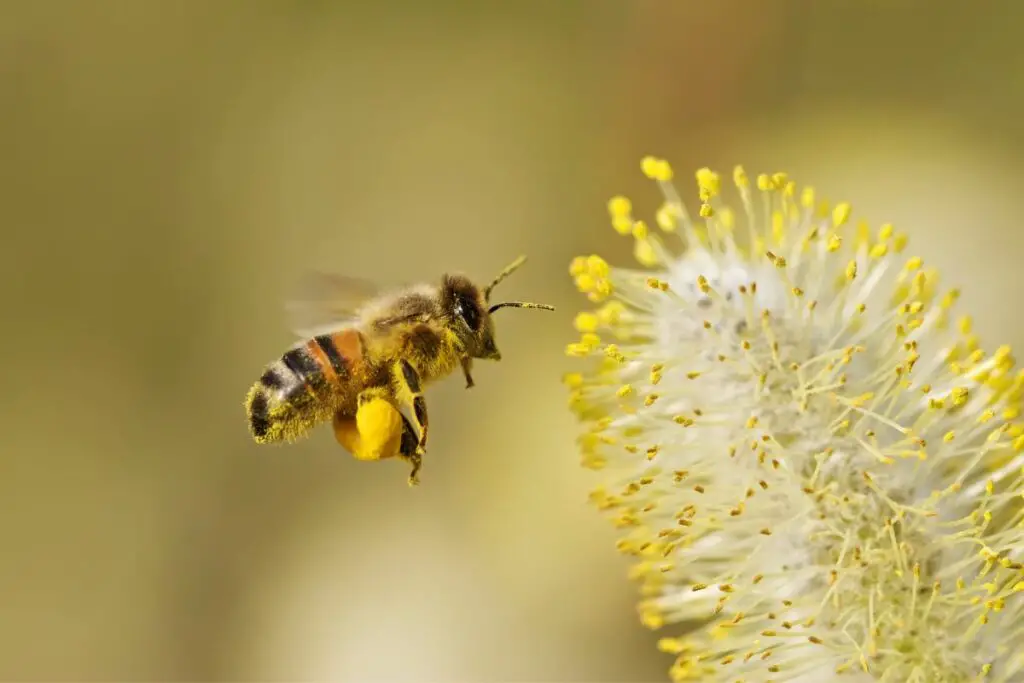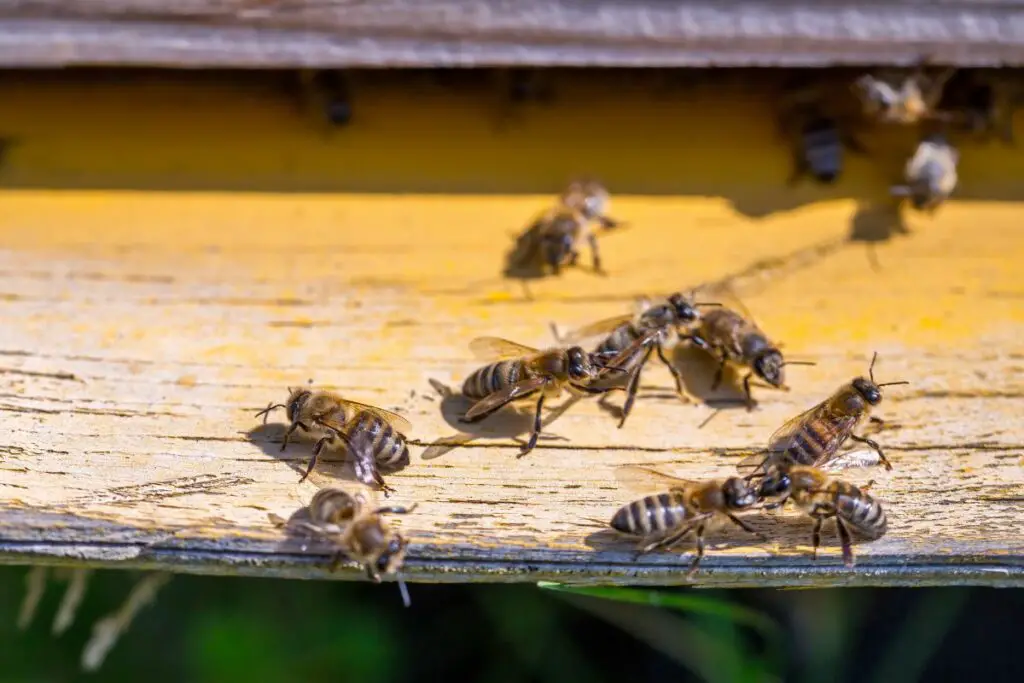Bees often sport a charmingly fluffy appearance. This fluffiness is due to the numerous fine hairs covering their bodies.
These hairs range from the short and bristly to the long and soft, giving bees their characteristic fuzzy look.
But the hair on a bee’s body isn’t just for show; it serves as a helpful aid in their day-to-day lives.
Why Do Bees Have Fur On Their Bodies?
A bee’s hairy abdomen and legs are multipurpose, helping them pollinate, regulate temperature, and sense their surroundings.
Pollination
The hair of bees is electrostatically charged, which means pollen grains stick to it like velcro.
As bees visit flowers to collect nectar, their hairy bodies brush against the stamens, picking up pollen.
This pollen is then carried to other flowers, helping in cross-pollination.
The density and hair arrangement can vary among species, influencing how efficiently different bees pollinate certain flowers.
The sparse, short hair on honey bees is perfect for collecting pollen in open flowers, while the longer, denser hair on bumble bees excels in flowers with deeper corollas.
Temperature regulation
The hairs on their bodies are ingeniously designed to aid in temperature regulation.
It works like a thermal blanket, helping keep the bee warm in cooler conditions. The tiny packed hairs trap heat around the bee’s abdomen and thorax.
In colder climates, bees adapt to have denser and longer hair, providing better insulation for harsh conditions.
Bumble bees in cooler regions are noticeably fluffier than their counterparts in warmer climates, helping them stay active at lower temperatures and forage further for longer.
Sensory aids
Bee hairs are sensitive to vibrations and can detect changes in air currents, helping in navigation and detecting nearby objects.
These vibration receptors can also help bees sense incoming predators.
How Do Their Furry Bodies Help Bees To Carry Pollen?
Pollen baskets, or corbiculae, are a remarkable feature found on the hind legs of some bee species, notably the honey bee.
They’re specially adapted for collecting and transporting pollen. Here’s how they work:
- Collection: As a bee visits a flower, it uses its body and legs to brush against the pollen-producing parts of the flower, collecting pollen grains. The bee then uses its front legs to transfer the pollen to its hind legs.
- Compaction: Once on the hind legs, the pollen is packed into the corbiculae. These are concave, smooth areas surrounded by a fringe of stiff hairs. The bee moistens the pollen with a bit of nectar or saliva, which makes it stickier and easier to pack into the pollen basket.
- Transport: The packed pollen forms a dense pellet in each corbicula. The surrounding hairs hold These pellets in place as the bee flies back to the hive. The structure of the corbiculae ensures that the pollen is securely held during flight.
- Unloading at the Hive: Other worker bees help remove the pollen pellets once back at the hive. The pollen is then stored within the hive, where it will be used as a protein source for feeding the larvae and other colony members.
This efficient system allows bees to transport substantial amounts of pollen, contributing significantly to their role as pollinators and their hive’s health and sustenance.

Scopa
The scopa is another specialized structure for collecting and transporting pollen.
It’s a dense mass of hairs on the legs or underside of bees’ abdomen in solitary and ground-nesting species like the leafcutter bee.
The hairs on the scopa brush against the stamens and collect pollen grains.
As the bee moves from flower to flower, you’ll often see vividly coloured conspicuous balls of pollen attached to their scopae.
When they return to their nest, solitary bees use their legs to scrape off the pollen from the scopa.
Depending on the species, this pollen is then used to form a provision for their larvae, mixed with nectar and sometimes other substances.




